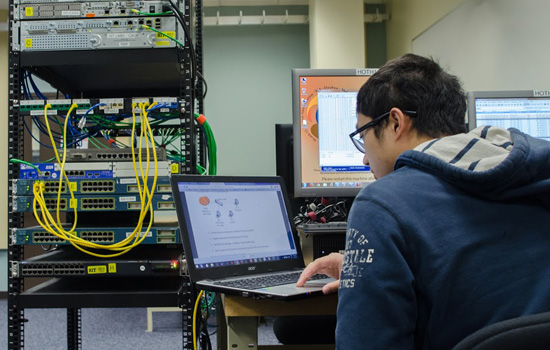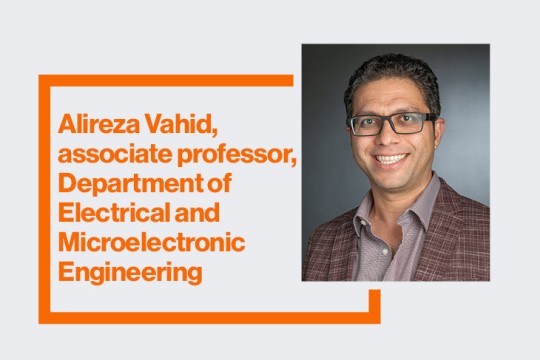RIT keeps degrees cutting-edge, changes names
Two new degrees offered in computing and information technology and web and mobile computing
Julia Prisaznuk
RIT is offering two revamped undergraduate degrees in computing and information technologies and web and mobile computing. The degrees include updated curriculum that will allow graduates to remain on the cutting edge of their field.
Rochester Institute of Technology has renamed two undergraduate computing degrees to better reflect how they have evolved to keep up with the ever-changing domain of computing.
The bachelor’s degree in web and mobile computing—formerly information technology—teaches students application development and programming, with a focus on the end user experience. The bachelor’s degree in computing and information technologies—formerly networking and systems administration—takes a broad approach to managing technology, networks and infrastructure.
Both degrees were renamed and updated with new curriculum to match the changing face of the technology industry. Offered through RIT’s Department of Information Sciences and Technologies, the degrees have an overall focus on using computing technology to address the needs of people in their professional and personal lives.
“In 1991, RIT invented the academic discipline of IT with the first nationally recognized information technology program,” said Steve Zilora, professor and chair of the IST Department. “We have continually updated our computing degrees to stay ahead of the technology curve. We have now changed the degree names to match the resulting content.”
With a degree in web and mobile computing, students will learn to design and build applications that work online and on mobile devices. The user-centric approach to application creation can be applied to varied environments, including desktops, tablets, phones and smartwatches and other wearable devices.
Students can also specialize in one of four concentration areas, including web application development, mobile application development, wearable and ubiquitous development and geographic information systems.
“The ever expanding horizons of computing, including the Internet of Things and ubiquitous computing, have allowed us to create a developers degree that explores these new, exciting and pervasive areas,” said Daniel Bogaard, associate professor and IST Undergraduate Program Director. “Both the faculty and the students are very excited about what comes next.”
With the hands-on degree in computing and information technologies, students learn to solve complex problems and deploy technology where it’s needed most. In addition to implementing these complex systems, students will become well versed in managing them.
“What if you tried to Google something, but couldn’t connect to the Internet—or you ordered a new pair of slippers from Amazon and received hand warmers instead?” said Zilora. “Ensuring connectivity, data integrity, security and usability is what CIT graduates do—they make sure we have the access to the technology we depend on.”
CIT students can further their skills by focusing in the concentration areas of database, enterprise administration, networking and communications, web administration and web development.
Both degrees are offered in RIT’s B. Thomas Golisano College of Computing and Information Sciences. For more information about the degrees, go to ist.rit.edu.















